Did you know Queensland is known as Australia’s sunshine state? It gets over 300 days of sunshine each year. This makes it perfect for using solar power as a renewable energy source. The state’s energy scene is changing, with a move to more sustainable power. This shift sparks a big debate on renewable vs traditional energy in Queensland.
Traditional energy, mainly from fossil fuels, has been a big deal in Queensland for a long time. But now, renewable options are starting to take over. The battle between these two kinds of energy is quite interesting. It shows the differences and the roles they play in the state’s energy landscape.
Deciding between them is tough. Fossil fuels helped the state’s economy grow. Yet, using sustainable energy sources leads us to a cleaner, stronger future. The choice is difficult in a state that loves its coal yet is quickly moving towards other sources like wind and solar. This move is making the Queensland energy landscape more interesting than ever.
Sustainable Home Magazine realizes the debate isn’t just about tech stuff. It’s about the planet, the economy, and the people. Thinking about renewable vs traditional energy in Queensland means thinking about our future, but it is also about choices that will impact us now as well as the world we leave to those who come after us.

Key Takeaways
- Getting the Queensland energy comparison right is key to making smart choices.
- It’s important to know the good and bad points of fossil fuels vs renewables for our planet’s future.
- With so much sunlight, Queensland is in a great position to lead in solar energy.
- Clean energy options are improving thanks to new tech and support from governments.
- The change in Queensland’s energy landscape is part of a global shift to clean energy.
- What Queensland picks in energy could set an example for the rest of the world.
Table of Contents
The Current Queensland Energy Landscape
Queensland’s energy scene is always changing. It’s time to strike a balance between new, green energy and old fossil fuels. This balance shapes where the energy field is headed.
Queensland Energy Consumption Trends
More and more, Queensland is using renewable energy. It’s not just a trend but a step towards a greener future. Solar, wind, and water power are being used a lot, showing a strong move to eco-friendly power. In some cases, the decision to use renewable energy is based on the traditional energy grids’ lack of investment as much as saving the planet.
Overview of Energy Sources in Queensland
In Queensland, you’ll find a mix of old and new energy sources. Coal and gas have been big, but now there’s a push for more green energy. This change aims to make our energy use kinder to the planet. The investment in renewable energy is also based on the cost of supply and the aging infrastructure of traditional power stations
The critical factor is both old and new energy sources are important for Queensland’s energy needs. And they’re key for the environment and the economy. Until renewable energy technology can adjust to fluctuations in power demand there is a case for the continued use of traditional energy power. At the same time not going ahead with the latest renewable technology will lead to increased cost for power and shortage in the future.
Renewable vs Traditional Energy in Queensland
Queensland’s differences between renewable and traditional energy. The choice we make over the next decade is crucial for the state’s effort to have a cost-effective power supply for all consumers. We will compare pros and cons, and look at important local issues. These include the use of land, health, and safety, which matter a lot to people and leaders.
Understanding the Basics of Each Energy Type
Sustainable energy options such as solar, wind, and hydropower use nature to create clean energy Queensland uses. These eco-friendly power sources contribute to keeping the environment safe. On the other hand, traditional energy comes mainly from burning coal and gas. It’s known for being reliable but hurts our planet with pollution and harm as well as being the most expensive in both investment and running cost.
Comparison of Renewable and Traditional Energy Sources
Looking at the pros and cons:
- Environmental impact: Renewables do much less harm to our planet than traditional ones.
- Cost-effectiveness over time: Renewables cost initially is similar to a new power station, but are much cheaper in the running costs.
- Energy independence: By using renewables, we will be able to scale power delivery to smaller communities. Rather than the centralized system that requires great distances from the supply to the consumer.
- Reliability: Renewable energy current technology still leads to supply issues without the backup of Traditional energy supply for the immediate future.
- Safety: Queensland has some harsh environments and as such is subject to Floods, fires, and Cyclones while these severely impact transmission lines it does not usually impact the power stations. Renewable power is much more likely to be impacted by weather events.
- Technology advancements for future improvements. Coal-fired power has largely remained the same over several decades. While there have been some changes using Natural gas there is little development of traditional power methods. Renewable energy has had massive improvements even over the past decade. With the global race for renewables, these changes are multiplying every year. Hence, forward projections about how much land or how renewable technology is required will change over the next years or decades, it is impossible to forecast future methods.
- Investment: There has been a lack of investment in Traditional power generation for decades, to ensure this is a viable method of power, it would take enormous sums to even maintain the current infrastructure as well as the time necessary to keep the lifecycle of the current power stations beyond their use by date. It should be clear to the majority of people that the investment needed to extend traditional power generation has been invested in renewables.
“These are some big issues that must be considered for the future, not just for the environment but also for keeping our energy stable and safe.“
Farmers Concerns About Green Energy
Farmers worry about the big space solar and wind farms need. They fear these could take over farming spots or disturb nature. There are rational reasons for this based on previous renewable technology and methods. Over the past few decades, farmers are required to have land management plans, so it is only fair that renewable energy projects also have obligations to the environment.
The main concerns seem to be about transmission lines through their property, the reduction of land for grazing or agriculture and, the visual impact on property values. All legitimate concerns.
However, based on the current emerging technology there is a better chance of reducing all of these based on Renewable energy than traditional energy.
- Even solar power on household roofs is one of the main reasons there have been fewer Coal-fired power stations built, with the need for more coal mines and the transport of coal and transmission lines to access the customers.
- Newer Solar farm technology has raised the panels to be able to use the land underneath as grazing land and in some cases for crops while generating power.
- Although further in the future the current improvements in Thorium Reactors that can be built to scale are well-advanced and likely to roll out over the next decade. Removing the necessity of the connection of the grid over long distances. Hopefully, this will lead to fewer lines over the state and people’s land.
It should be a priority for legislators to ensure renewable energy includes using land in a way that ensures clean energy Queensland projects live in peace with farms and nature
Potential Fire Hazards from Green Energy
New green technologies are sometimes linked to safety concerns, like fires from solar panels, and current battery backup technology. Setting high standards and checking systems often are crucial. They make sure eco-friendly power sources run safely. Although the current transmission of electricity using the Transmission lines are also a fire hazard that has been proven over time.
There have been advancements in safety with panels moving higher from the ground to include agriculture under the panels, ensuring there is less fire hazard.
The adoption of larger scale Flow battery technology hence moving from Lithium battery technology. Flow battery technology is much less flammable than Lithium systems.
Wind energy is also a high-grade fire hazard that is as yet untested when major fires go through an area with numerous turbines.
Exploring these sides of renewable and traditional energy is key to making smart choices for Queensland’s energy future. We need to keep improving the monitoring of fire impact based on the different technologies.
Possible Health Factors with Wind Turbine Technology
Wind turbine technology has several potential health factors that should be considered:
- Noise Pollution: Wind turbines produce noise from the rotating blades and other mechanical components. This noise can be a source of annoyance and disturbance for nearby residents, especially in quiet rural areas. Prolonged exposure to turbine noise has been associated with sleep disturbance, headaches, and stress.
- Shadow Flicker: As the blades rotate, they can cast moving shadows on nearby buildings or properties. This flickering effect can be annoying and has been linked to potential health issues like headaches, dizziness, and even seizures in susceptible individuals.
- Infrasound and Low-Frequency Noise: Wind turbines generate infrasound (sound below the lower limit of human hearing) and low-frequency noise. While the health effects of infrasound are still debated, some studies suggest that prolonged exposure may cause issues like sleep disturbance, headaches, and cognitive impairment.
- Electromagnetic Interference (EMI): Wind turbines can produce electromagnetic radiation, which may interfere with nearby electronic devices or potentially affect individuals with electromagnetic hypersensitivity (EHS), however the evidence for the latter is limited.
- Environmental Impact: Wind turbines can impact wildlife like birds and bats through collisions or habitat disturbance. This can potentially affect local ecosystems and biodiversity.
- Visual Impact: Large wind turbines can affect the visual landscape, which may be a concern for some communities or individuals, particularly in areas with scenic vistas or cultural significance.
Important note: Potential health effects of wind turbines are often dependent on factors such as distance from the turbines, wind direction, and individual sensitivity. Proper siting, design, and mitigation measures can help reduce potential impacts. Additionally, the benefits of renewable energy generation should also be weighed against potential health concerns.
What is the Queensland Wind Farm Code (State Code 23)
Queensland has specific regulations for wind farm developments outlined in the Wind Farm Code (State Code 23) and accompanying guidelines. Here are the key points regarding wind turbine regulations in Queensland:
- All wind farm applications undergo assessment by the State Assessment and Referral Agency (SARA) through a coordinated whole-of-government approach.[3]
- The code aims to minimize adverse impacts on the environment, visual amenity, air services, transport networks, and noise levels.[1]
- Noise criteria are based on current best practices, with maximum outdoor noise levels of 45dB(A) or background noise plus 5dB(A) on host properties, and 35dB(A) or background plus 5dB(A) on non-host lots at night.[5]
- Requirements cover protecting areas of high ecological/biodiversity value, the Great Barrier Reef from construction impacts, identifying viable haulage routes upfront, and highlighting rehabilitation expectations.[1]
- Technical assessments are required for electromagnetic impacts, shadow flicker, ecological impacts, and detailed noise impact assessments following specified methodologies.[2]
- The code aims to balance renewable energy development with protecting communities and the environment through clearer benchmarks for managing impacts.[1][5]
The regulations outline a comprehensive assessment process and criteria for wind farms to ensure they are appropriately located, designed, and operated while addressing potential impacts on nearby communities and the environment.[1][2][3][5]
Citations:
[1] https://statements.qld.gov.au/statements/98353
[2] https://arkenergy.com.au/documents/457/wind-farm-state-code-planning-guideline.pdf
[3] https://www.business.qld.gov.au/industries/mining-energy-water/energy/renewable/project-development/planning-approvals
[4] https://www.energyandclimate.qld.gov.au/energy/types-of-renewables/primary/wind-energy
[5] https://www.agforceqld.org.au/knowledgebase/article/AGF-01846/
According to the sources provided, the setback distance or minimum distance required between wind turbines and residential dwellings in Queensland is 1.5 kilometers (km).
Specifically:
Queensland Wind Farm Code Requirements for Dwellings
- The Wind Farm Code (State Code 23) in Queensland sets a setback distance of 1.5km between wind turbines and “sensitive land uses” such as dwellings.[1][4]
- This 1.5km setback applies unless written agreement is obtained from the landowner to allow turbines closer than 1.5km to their dwelling.[1][2]
- The code aims to minimize impacts on visual amenity, noise levels, and other factors by mandating this 1.5km setback distance from residences.[1][4]
- The 1.5km setback is based on typical noise levels dropping below 35dB(A) beyond that distance from modern wind turbines under most conditions.[4]
So in summary, the regulated minimum distance or setback required between wind turbines and residential dwellings in Queensland under the state’s Wind Farm Code is 1.5 kilometers, unless the landowner provides written consent to allow turbines closer.[1][2][4]
Citations:
[1] https://www.energyandclimate.qld.gov.au/energy/types-of-renewables/primary/wind-energy
[2] https://www.allens.com.au/insights-news/insights/2016/07/new-wind-farm-planning-code-and-guideline-for-queensland/
[3] https://reneweconomy.com.au/insight-australias-wind-energy-setback-tracing-origins-of-2km-rule-26731/
[4] https://www.aeic.gov.au/observations-and-recommendations/governance-compliance
[5] http://www.mtemeraldwindfarm.com.au/Files/MEWF_project_approval_docs/Attachment%207%20-%20Landscape%20Visual%20Impact%20Assessment.pdf
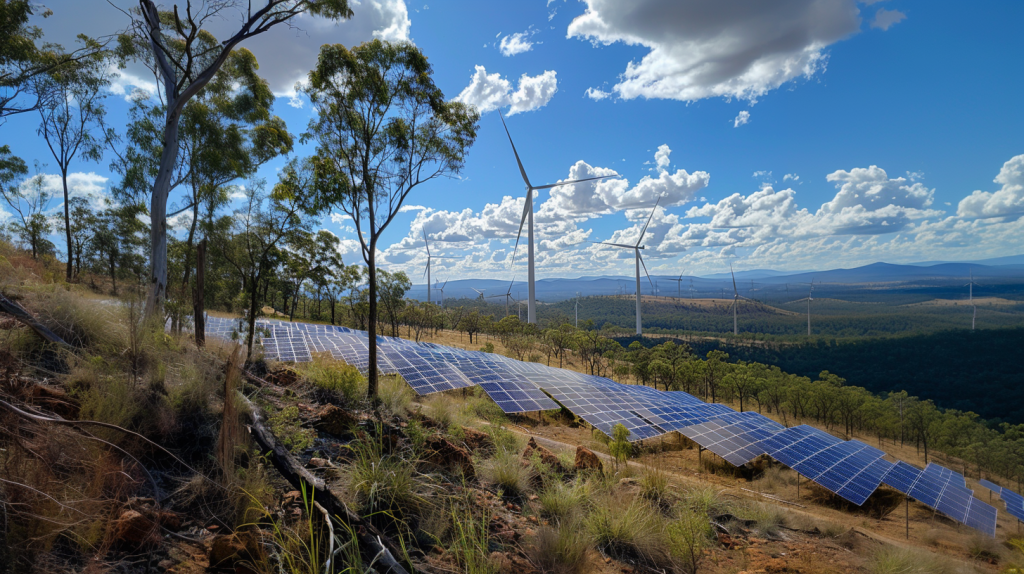
Benefits of Investing in Renewable Energy Solutions
Renewable energy solutions play a key role in both ecological and economic growth. They offer benefits not only for the planet but also for our wallets. By investing in green energy, we contribute to fighting climate change and create new jobs.
Queensland is leading by example, striving for a future powered by clean energy. Its efforts show how using alternative energy can become the new standard. This way, we can make a positive impact by choosing to support eco-friendly power generation.
- Renewable energy helps reduce harmful emissions, like CO2, in the air.
- It allows regions to be less reliant on coal, promoting energy independence.
- The growth of renewable energy projects creates jobs and helps the economy.
The table below compares the effects of renewable and non-renewable energy sources:
| Energy Type | Environmental Impact | Economic Impact |
|---|---|---|
| Renewable Energy | Low environmental damage | High potential for job creation |
| Non-renewable Energy | High environmental damage | Subject to market fluctuations |
Choosing renewable energy solutions symbolizes a commitment to the planet and future generations. It’s not just about being eco-friendly; it’s about building a more sustainable and resilient society.
The Drawbacks of Persisting With Traditional Fossil Fuels
In today’s world, we often compare fossil fuels vs renewable energy. This comparison shows us the big issues with sticking to old energy ways. Using fossil fuels has serious downsides for our planet and health.
Environmental Impact of Conventional Energy Sources
The environmental impact of fossil fuels is huge. Energy sources like coal, oil, and natural gas are the top sources of greenhouse gases worldwide. They add tons of carbon dioxide and bad gases to our air, making global warming worse.
Health Concerns Related to Fossil Fuel Usage
Using fossil fuels can seriously harm our health, too. They create pollutants like sulfur dioxide and nitrogen oxides. These pollutants can cause breathing and heart problems.
Sticking to fossil fuels puts our planet and our health at risk. That’s why moving to cleaner, safer energy sources is so important.
| Energy Source | Environmental Impact | Health Impact |
|---|---|---|
| Coal | High carbon emissions; habitat destruction | Respiratory problems; cancer risks |
| Oil | Oil spills; air and water pollution | Respiratory issues; skin diseases |
| Natural Gas | Methane emissions; water contamination | Risks of respiratory diseases |

Clean Energy Options and Sustainable Energy Solutions in Queensland
Queensland is leading the way in clean, sustainable energy. The shift to green power is more than just a trend. It’s a big move towards a brighter, greener future. With many renewable energy choices, the state is committed to transforming its energy scene. This commitment is clear in its strong renewable energy policies.
Types of Renewable Energy Projects in Queensland
Queensland is investing in several green energy types. Solar, wind, and hydroelectric power are big here. These projects use the state’s sunny days and strong breezes to lead in renewable energy.
Queensland’s Renewable Energy Policies and Incentives
Queensland is keen on helping both people and businesses go green. It offers many incentives to make the switch to renewable energy easier. From help with solar panels to support for large green projects, Queensland’s policies are focused. They help the economy and the environment by aligning incentives with what’s best for the planet.
- Solar Bonus Scheme offering competitive feed-in tariffs.
- Grants for businesses investing in large-scale renewable energy installations.
- Subsidies for homeowners to install energy-efficient appliances and systems.
With strong support and great policies, clean energy is thriving in Queensland. This approach strengthens the state’s energy security. It also puts Queensland at the forefront of the worldwide move towards a sustainable future.
Evaluating the Financial Implications: Cost Comparison
It’s important to look at the cost of energy plants and the benefits of using renewable sources. By doing this, we can understand savings if we switch energy sources. This look at costs helps show the true effect of making long-lasting or different energy choices.
Lifecycle of Current Power Stations
The cost of making, keeping up, using, and maybe taking down power plants must all be examined. These details change how we compare energy sources. They play a big part in short and long term plans for the power industry.
Based on the information provided in the search results, here are the key details about the expected life cycle and retirement dates of major power stations currently operating in Queensland:
Current Coal-Fired Power Stations
Callide Power Station
- Callide B (Units 1 & 2): Expected to operate until 2028, reaching their 50-year life cycle.[1]
- Callide C (Unit 1): Expected to operate until 2038, reaching its 50-year life cycle.[1]
- Callide C (Unit 2): Was mothballed in 2021 after an explosion, with plans to return to service by early 2024.[1]
Tarong Power Station
- Units 1 & 2: Expected to retire in 2036 after reaching their 50-year life cycles.[3]
- Units 3 & 4: Expected to retire in 2037 after reaching their 50-year life cycles.[3]
Other Major Coal Plants
- Gladstone Power Station: Scheduled for closure in 2035.[4]
- Stanwell Power Station: Scheduled for closure in 2046.[4]
- Kogan Creek, Millmerran: No specific retirement dates in the sources.
The Australian Energy Market Operator (AEMO) estimates most of Queensland’s large coal power stations will operate for around 50 years before retirement, based on their commissioning dates in the 1980s-2000s.[1][3]
No details were provided on the expected life cycles of Queensland’s gas, wind, solar or biomass power stations. The sources focused primarily on providing updates for the state’s aging coal-fired fleet.
In summary, many of Queensland’s major coal power plants are expected to retire in the 2030s as they reach the end of their 50-year operating life cycles, based on the latest projections.[1][3][4]
Citations:
[1] https://www.gem.wiki/Callide_power_station
[2] https://www.epw.qld.gov.au/__data/assets/pdf_file/0030/32988/queensland-supergrid-infrastructure-blueprint.pdf
[3] https://www.gem.wiki/Tarong_power_station
[4] https://en.wikipedia.org/wiki/List_of_power_stations_in_Queensland
[5] https://www.stanwell.com/energy-assets/our-power-stations/
Cost to Upgrade the Current Power Stations if Renewable Projects Canceled
If we don’t go forward with green energy projects, we might have to spend a lot of money to upgrade old systems. These updates would have to match new green standards and keep up with growing energy needs. That could make running them more costly.
| Energy Source | Lifecycle Costs | Upgrade Costs if Renewables Canceled |
|---|---|---|
| Traditional (Coal, Gas) | $1.5 billion over 30 years | $750 million |
| Renewable (Solar, Wind) | $1 billion over 30 years | N/A |
| Hybrid (Mix of Traditional and Renewable) | $1.2 billion over 30 years | $500 million |
Knowing these details is key for everyone in the energy field, from those who make rules to investors. The table shows that moving to green power doesn’t just help the planet. It also saves a lot of money on building and updating power plants.
Renewable Energy Trends and Technological Advancements
Queensland’s push for renewable energy is moving fast. This change is fueled by new green tech and successful projects. The face of energy in Queensland today is being crafted by these steps.
Based on the information provided in the search results, here is the current status of renewable energy projects in Queensland:
Significant Growth in Large-Scale Projects
As of the end of 2023, there was 70 large-scale renewable energy projects operating in Queensland. These include solar farms, wind farms, batteries, and pumped hydro facilities across the state.[1]
Since 2015, Queensland has seen 54 large-scale renewable projects either operating, under construction or financially committed, representing over $11 billion in investment.[2]

Renewable Energy Capacity
The total installed renewable energy capacity in Queensland as of early 2024 was:
- Over 10,000 MW from all renewable sources (large-scale and rooftop solar)[2]
- Around 6,000 MW from the 54 large-scale projects alone[2]
- Around 5,000 MW from over 830,000 rooftop solar installations[2]
Progress Towards Targets
Queensland’s renewable energy generation reached 27% over the 12 months to October 2023, putting the state on track to meet its targets of:[1][2]
- 50% renewable energy by 2030
- 70% by 2032
- 80% by 2035
The government has committed significant funding in the 2023-24 budget to support new renewable projects, pumped hydro, batteries, and transmission infrastructure to enable this transition.[1]
In summary, Queensland has seen a rapid expansion of large-scale renewable projects in recent years, with over 70 operating across the state as of late 2023. This growth in solar, wind, batteries and hydro helping Queensland to progress towards its ambitious renewable energy targets for 2030 and beyond.[1][2]
Citations:
[1] https://www.energyandclimate.qld.gov.au/energy/benefits-of-renewable-energy/energy-transition-progress
[2] https://www.energyandclimate.qld.gov.au/about/initiatives/renewable-energy-targets
[3] https://www.business.qld.gov.au/industries/mining-energy-water/energy/renewable/project-development/resources
[4] https://www.qld.gov.au/about/newsroom/queensland-energy-and-jobs-plan
[5] https://www.statedevelopment.qld.gov.au/industry/queensland-is-renewable-ready
Recent Developments in Green Energy Technologies
In the last few years, technology in Queensland has made big leaps. This has made solar panels and wind turbines more efficient and cheaper. More people in the state can now use these sources for power.
Case Studies: Successful Renewable Energy Projects
Queensland is making real progress with renewable energy. For example, the Longreach solar farm is showing that solar power can work well. Plus, places like Hughenden are using a mix of wind, solar, and batteries for better power reliability.
These successful projects show what can be done with renewable energy. They fit with Queensland’s dream for a green energy future. This future is both sustainable and energy-smart.
| Project | Type | Location | Outcome |
|---|---|---|---|
| Longreach Solar Farm | Solar Power | Longreach, QLD | 15 MW capacity, powers 5,000 homes |
| Hughenden Hybrid System | Wind-Solar-Battery | Hughenden, QLD | Enhanced reliability, grid stability |

Overview Hughenden Hybrid System
Hughenden Hybrid System refers to the Kennedy Energy Park. Australia’s first hybrid renewable energy project it is located near Hughenden in North West Queensland.
- It is a hybrid renewable energy facility that combines wind, solar, and battery storage technologies to generate electricity.[2][5]
- The system comprises 43 megawatts (MW) of wind power, 15 MW of solar photovoltaic, and a 2 MW/4MWh battery energy storage system.[2][5]
Purpose
- The hybrid system aims to leverage the complementary nature of Queensland’s solar and wind resources to deliver renewable energy around the clock.[2]
- It is designed to provide reliable power by utilizing multiple renewable sources that can compensate for each other’s variability.[2]
Project Details
- Kennedy Energy Park is a 50-50 joint venture between Windlab and Japanese company Eurus Energy.[2]
- The location near Hughenden was selected for its world-class solar irradiance and wind resource potential.[2]
- CS Energy has an offtake agreement for 100% of the output, supplying renewable energy to Queensland government sites like schools, hospitals, and emergency services.[2][5]
Benefits
- It positions Queensland as a leader in hybrid renewable energy systems and the transition to a decarbonized economy.[2]
- The project encourages large industrial and commercial customers to increase their use of renewable energy sources.[2]
- The Hughenden region is strategically important for Queensland’s renewable energy future with its vast potential.[5]
In summary, the Hughenden Hybrid System, also known as the Kennedy Energy Park, is an innovative wind-solar-battery facility pioneering combined renewable technologies to provide reliable green energy for Queensland.[2][5]
Citations:
[1] https://www.youtube.com/watch?v=YEIfOwUr-i4
[2] https://csenergytomorrow.com.au/hybrid-renewable-energy-to-power-schools-hospitals-and-emergency-services/
[3] https://www.townsvillebulletin.com.au/business/townsville-business/fortescue-plans-to-develop-10gw-of-wind-and-solar-at-hughenden/news-story/3d2ddf87727dbe98d28619614a9af5a4
[4] https://kennedyenergypark.com.au/wind-and-solar-energy-park-proposed-for-hughenden/
[5] https://www.csenergy.com.au/news/kennedy-energy-park-shines-for-queensland
Thanks to new green tech and solid projects, the future of energy looks bright in Queensland.
Eco-Friendly Power Generation: From Concept to Reality
Queensland is making a big move towards green energy. It has shifted from just dreaming to real action. Now, it stands out as a leader in green energy within the country. Learn more about how cities in Queensland are going green.
Big changes are happening thanks to new policies and projects. They are all about bringing more green tech into our lives. The process shows how Queensland is taking big steps towards a cleaner future.
| City | Green Energy Initiatives | Percentage of Renewable Energy Usage |
|---|---|---|
| Cairns | Solar Panels on Public Buildings | 45% |
| Townsville | Wind Farms Development | 38% |
| Brisbane | City-wide Transition to Electric Buses | 50% |
| Gold Coast | Community Solar Programs | 47% |
These projects mean more than just looking good. They make these cities stand tall in green power. Queensland is not just saving the planet; it’s also a role model for others. The table below is a small look at the big changes happening in the region.

Traditional Energy and Its Role in the Modern Energy Mix
As Queensland works towards a green future, knowing about traditional vs sustainable energy is key. Green energy projects are growing. yet, traditional energy is still important. We’ll look at why traditional power matters and ways to shift to cleaner energy.
Analyzing the Necessity of Traditional Power Generation Today
Traditional power is vital for keeping the energy grid stable. Queensland mainly uses coal and natural gas for energy. These give quick and large amounts of energy, something green energy can’t fully do yet. This stability is crucial for times when energy use is very high.
Transition Strategies from Traditional to Green Energy Solutions
Moving to clean energy needs smart plans that meet today’s needs and tomorrow’s green goals. Queensland is improving green energy projects and reducing reliance on traditional energy. This step-by-step move is important for reliable energy and a strong economy.
Knowing all about green energy projects actual vs planned in Queensland shows what’s going well and what needs work. It helps us see how to speed up the move to green energy. This involves looking at current and future green projects.
Changing from old to new energy sources carefully is crucial for keeping our energy safe. The move to green energy is good for the planet. It also creates new jobs and opens up new business opportunities in the green tech field.
Understanding these energy shifts shows the importance of balanced energy policies and personal choices. This matches global green efforts and local needs for a lasting future.
Final Thoughts.
At Sustainable Home Magazine there are very few items as important as Power security and cost-effective power costs. While there are arguments on both sides with people opposed to some Renewable power in reality the decision was made a long time ago, with lack of future investment in Power Stations and instead changed to renewables. Getting rid of Power stations would be a mistake as the current technology is not able to allow for renewable power supply fluctuations.
Not making progress on Renewable power would be even worse. There is a window where the use of both renewable and traditional energy is in the best interest for Queenslanders. This is till renewable energy can allow for Fluctuations in power demand. Aging traditional power stations will need upgrades and maintenance that is not financially viable or environmentally suitable for future generations.
Looking ahead, Queensland is moving toward renewable energy with discussions about mixing new and traditional power for a strong, green future. Queensland’s mix of energies is not just about replacing, but blending old and new.
The move to green energy is exciting in Queensland. It shows the state is serious about eco-friendly power. With new tech and rule changes, Queensland is trying to become a global green leader.
Need more about Queensland’s energy? Check out Sustainable Home Magazine. It explains how we can support a clean, green life. Choosing green energy is everyone’s job. Together, we make Queensland eco-friendlier, ensuring a better world for all.
FAQ
What are the main differences between renewable and traditional energy in Queensland?
Renewable energy in Queensland comes from solar, wind, and water power. It is better for the environment. Traditional energy is from coal and gas, causing pollution and harm to our planet.
How does the current energy consumption trend in Queensland reflect on its energy landscape?
Queensland is using more renewable energy to cut down on pollution. But, we still rely on fossil fuels a lot because of old systems and money.
What are the benefits of investing in renewable energy solutions for Queensland?
Green energy brings many good things. It makes the air cleaner and can save money in the long term. Also, it helps us shape a sustainable future.
What are the environmental and health concerns associated with the usage of fossil fuels in Queensland?
Fossil fuels pollute the air and damage nature. They also make people sick. This includes problems like bad breathing and heart issues from dirty air.
What types of renewable energy projects are currently in place or planned in Queensland?
Queensland is home to big solar, wind, and water energy projects. It is also looking into new ways, like better batteries and bioenergy, to increase renewable power.
How does the Queensland government support the transition to renewable energy?
The government helps by setting good rules and giving money for solar power. It invests in green tech and helps with making homes and buildings more energy efficient.
From a financial standpoint, how do renewable and traditional energy sources compare in Queensland?
Green energy can cost more at first but is cheaper later. It is stable against changes in fuel prices. This makes it a good choice for saving money over the years.
What recent technological advancements have been made in the field of renewable energy in Queensland?
In Queensland, solar and wind tech is getting better. Batteries and the smart tech that connects it all are also improving. This progress makes green power more dependable and efficient.
What is the necessity of traditional power generation in today’s energy mix in Queensland?
Having some traditional power is needed for a stable energy supply. But, the aim is to use less of it as we grow our green energy ability to support our needs.
What strategies are in place to facilitate the transition from traditional to green energy solutions in Queensland?
To move to green energy, we have set bigger goals and give money for green power use. We are also improving our electric system and teaching people the skills we need for clean energy jobs.

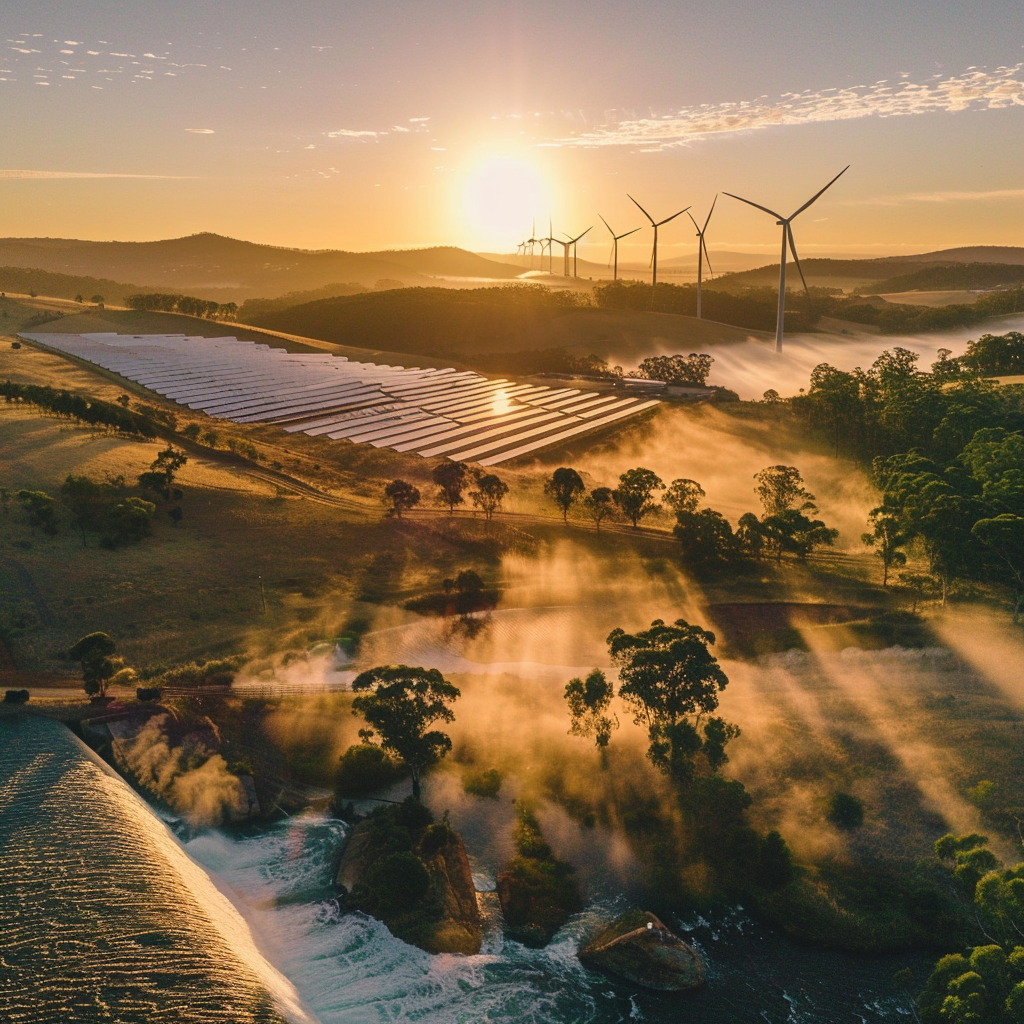


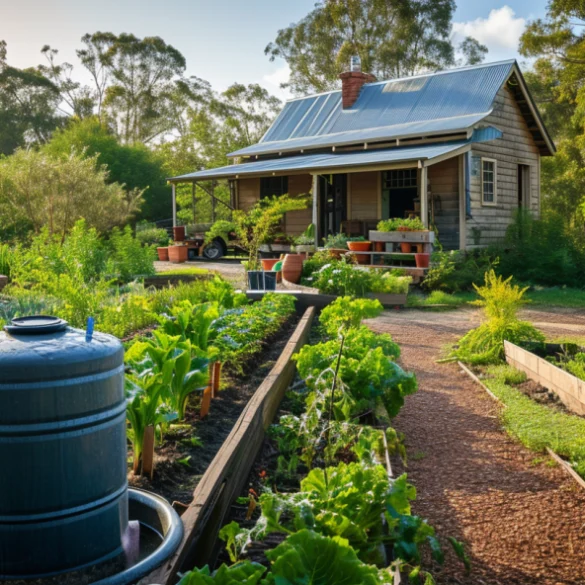
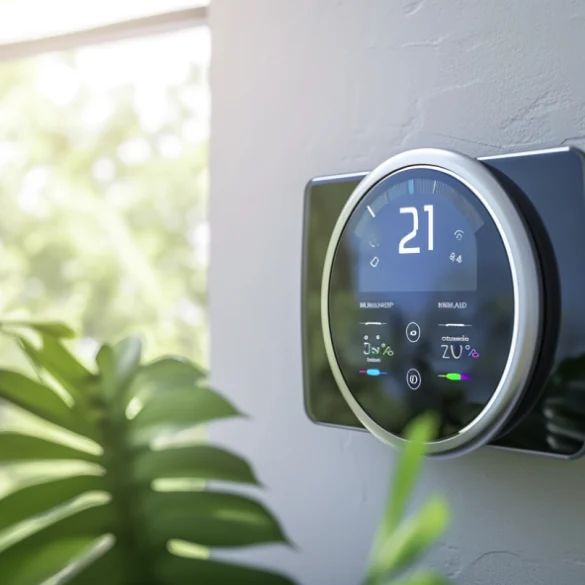


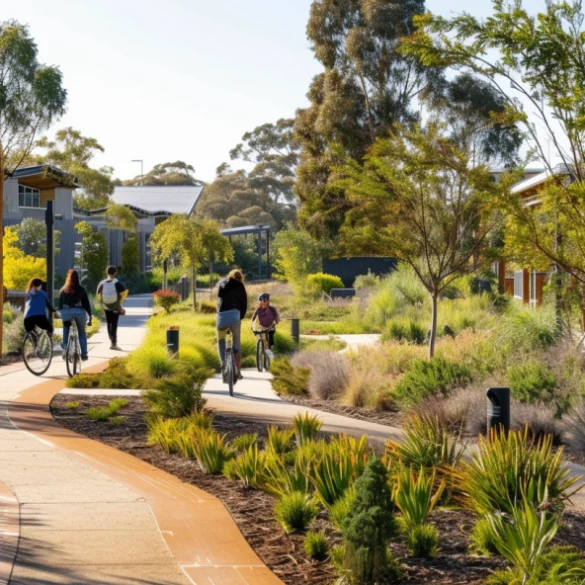
1 comment
[…] the environment. It includes using solar power, saving water, and choosing eco-friendly materials. Sustainable Homes offers homes with solar systems to help homeowners go […]